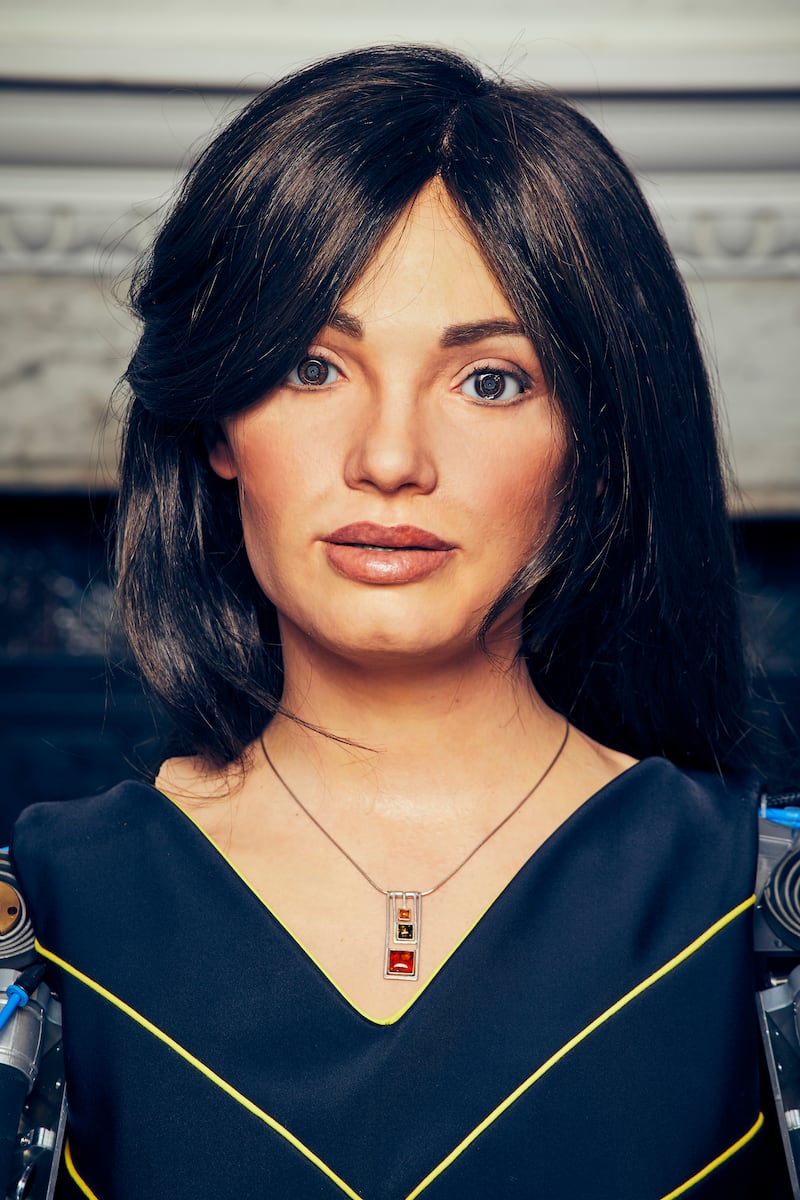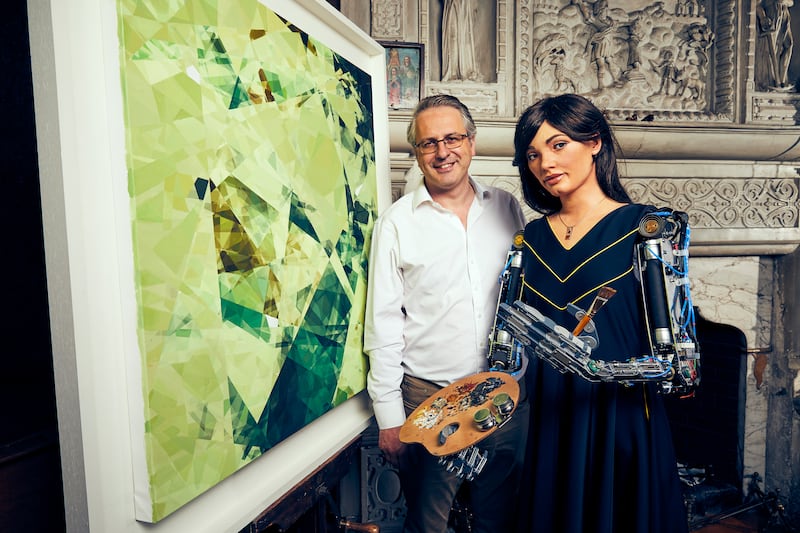A humanoid AI robot is set to open its own exhibition of artwork in Oxford, drawn independently using a robotic arm and an inbuilt camera.
The robot, called Ai-Da after the mathematician Ada Lovelace, is said to be the first ultra-realistic robot capable of drawing people from life using her eye and a pencil in her hand, according to its creators.
Ai-Da’s solo exhibition Unsecured Futures, which opens at Oxford University from June 12, will showcase a selection of the robot’s work, developed using AI processes and algorithms at the university.

The artwork will include drawing, painting, sculpture and video art, exploring the boundaries between AI, technology and organic life.
“Pioneering a new AI art movement, we are excited to present Ai-Da, the first professional humanoid artist, who creates her own art, as well as being a performance artist,” said Aidan Meller, Ai-Da’s brainchild and gallery owner.
“As an AI robot, her artwork uses AI processes and algorithms.
“The work engages us to think about AI and technological uses and abuses in the world today.”

Engineers in Leeds developed the robotic hand used by Ai-Da, which follows a number of stages and AI algorithms, calculating a virtual path based on what it sees in front of it and interpreting co-ordinates to create the piece of art.
“We are looking forward to the conversation Ai-Da sparks in audiences,” said Lucy Seal, researcher and curator for the project.
“A measure of her artistic potential and success will be the discussion she inspires.
“Engaging people so we feel empowered to re-imagine our attitudes to organic life and our futures is a major aim of the project.”








